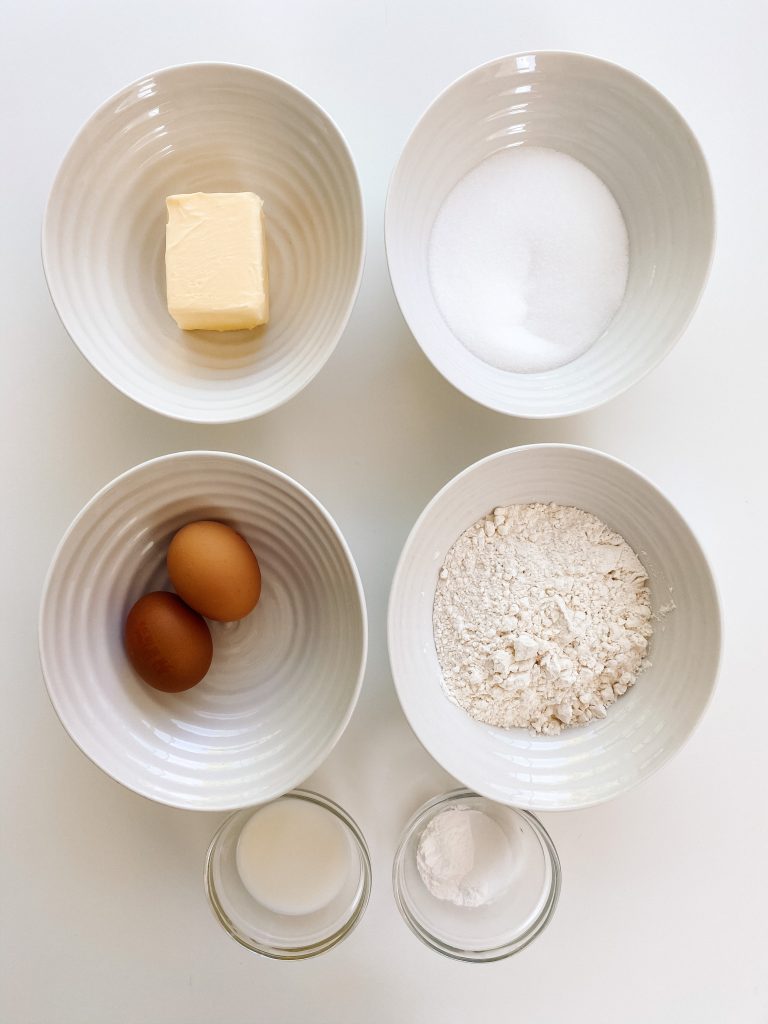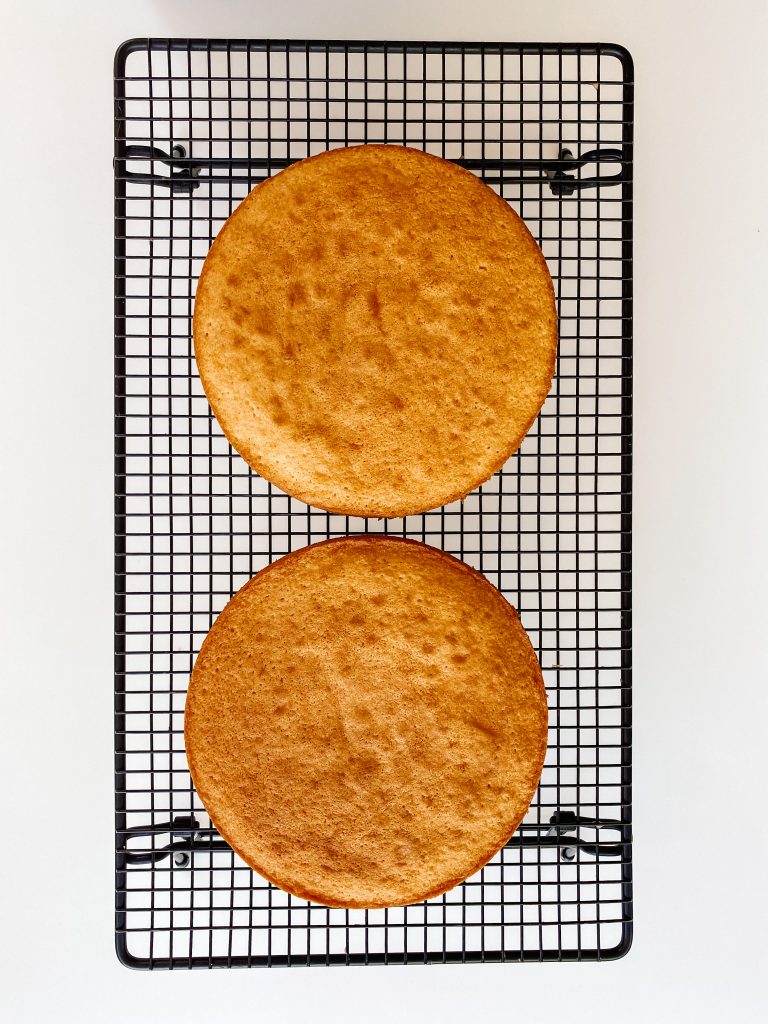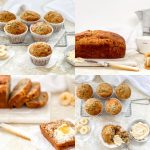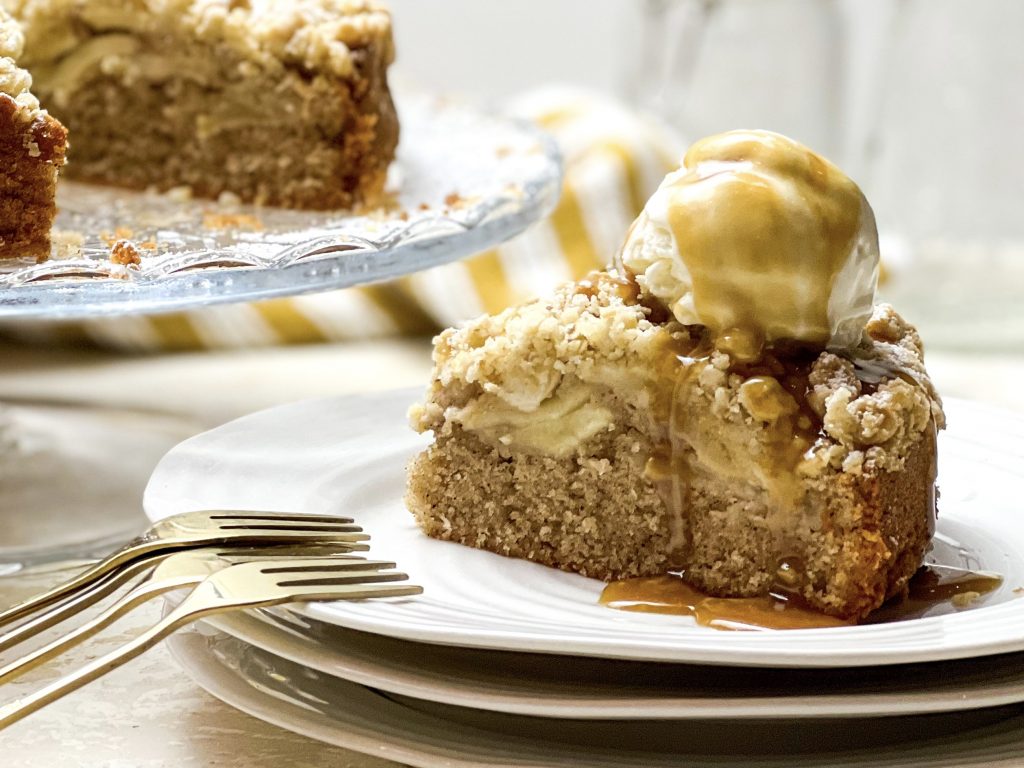
Classic Sponge Cake/Pudding – Core Recipe
Light, fluffy, versatile, and made in one bowl, this recipe can be used to make a range of different sponge cakes, fairy cakes and cupcakes as well as puddings. You can steam this batter with jam or golden syrup to make Jam and Syrup Steam Puddings and it can be baked on top of cooked, or uncooked fruit to make delicious hot puddings served with custard, cream or ice cream. This is one classic sweet recipe, you definitely want in your recipe armoury. Oh, and did I also say it is incredibly delicious and only needs mixing for around a minute?
A variety of recipes based on Classic Sponge Cake/Pudding – Core Recipe
Keep an eye out for these dishes –
Sponge Cake recipes already posted:
- Victoria Sponge Cake with Fresh Cream and Strawberry Jam
- Chocolate Cake
- Coffee and Pecan Cake
- Lemon and Almond Cake with Lemon Icing
- Banana Cake with Lemon Icing
- Light Lemon Fruitcake with Almonds and Vanilla Mascarpone Icing
Sponge Cake recipes I plan to post:
- Lemon Cake
- Mocha Cake
- St Clement’s Cake
- Orange Cake
- Fairy Cakes
- Cupcakes
- Lemon Drizzle Cake
Sponge Pudding recipes already posted:
- Eve’s Pudding with Apples and Almonds
- Lemon and Almond Sponge Pudding with Raspberries
- Steamed Syrup Sponge with Lemon
- Slow Cooker Steamed Chocolate Pudding with Hot Chocolate Sauce
- Irish Apple Cake with Salted Caramel Sauce
Sponge Pudding recipes I plan to post:
- Jam and Almond Sponge Pudding
- Eve’s Pudding with Apples and Cinnamon
- Pear and Almond Sponge Pudding
- Raspberry and Almond Sponge Pudding
- Forest Fruits and Vanilla Sponge Pudding
- Chocolate Sponge Pudding with Chocolate Chunks
- Chocolate Sponge with Pears
- Pear and Ginger Sponge Pudding
- Plum and Ginger and Sponge Pudding
- Rhubarb and Orange Sponge Pudding
Traditionally you would weigh the egg or eggs and use the same weight in sugar, butter and flour as well as adding a little salt and some baking powder. You can of course calculate your sponge mixture like this, but for ease I have given quantities based on the average weight of a large egg and hence also given guidance on the salt and baking powder needed.
Classically, this sponge is made by beating the butter and sugar until light and fluffy, slowly beating in the eggs and then folding in the sieved flour. Although not difficult, it can be tricky to judge how long to beat at each stage – too much or too little and your sponge may not rise sufficiently or not be as light and fluffy as you would like. Fortunately, Delia Smith and Mary Berry have both championed the ‘all-in-one’ method – and this is the one I swear by. You simply put everything in one bowl and beat until combined. The key is, not to overbeat. Delia says to beat for a minute and Mary says to stop beating as soon as combined. Funnily enough it takes around a minute, sometimes less than, for everything to be just combined!
How to make Classic Sponge Cake/Pudding- Core Recipe
Quick, easy and all made in one bowl. Collect all your ingredients together:
- unsalted butter
- caster sugar
- eggs
- plain flour
- baking powder
- salt
- milk
It is important to make sure the butter is at room temperature and soft enough to beat easily with the other ingredients. I place my mixing bowl on top my scales and weigh everything directly into the bowl. Ideally, you should sieve the flour, although I confess I don’t always do this! The best way to do it though is to place the sieve on top of the bowl, zero the scales, weigh in the flour and then shake the sieve. Use an electric whisk to beat until combined. All done.

1 
2 
3 
4 
6 
7
Sponge Cake

8 
9
Sponge Pudding

8 
9
Made this recipe?
If you make this recipe, do please tag me on instagram @daffodil_kitchen. You could also leave a comment in the box directly below the recipe.
Classic Sponge Cake/Pudding- Core Recipe
Light, fluffy, versatile, and made in one bowl, this recipe can be used to make a range of different sponge cakes, fairy cakes and cupcakes as well as puddings.
Ingredients
- 130g unsalted butter
- 130g caster sugar
- 2 large eggs
- 130g plain/all-purpose flour
- 1¼ teaspoons baking powder
- ¼ teaspoon fine salt
- 1 tablespoon milk
Instructions
-
Collect together your equipment (see Recipe Notes below) and ingredients.
-
Preheat oven to Fan Oven 160°C/180°C/350°F/Gas 4
-
Grease and line your cake tin(s) or baking dishes or insert cake tin liner(s), as necessary.
-
Ensure the butter is at room temperature and soft enough to beat. If not soften it slightly in the microwave. (Be very careful not to melt it though – just do 5 seconds at a time if you are unsure.)
-
Add all the remaining ingredients to the butter and whisk thoroughly with an electric whisk until just combined. This should take around 45 seconds to 1 minute, and no more.
NB to sieve the flour, see Recipe Notes
-
Transfer to the prepared cake tins or baking dish (see Recipe Notes) and cook in the centre of the oven for 18 – 22 minutes for a cake or 30 – 45 minutes for the pudding (depending on size of dish, it may take even longer) or until the sponge is cooked. It is cooked when:
– the centre feels springy when lightly touched with your finger and no imprint remains
– a toothpick inserted into the centre of the cake comes out clean
– the cake is beginning to come away from the sides of the tin/dish.
-
NB – puddings
When making a pudding, you may need to cover the pudding with foil towards the end of cooking to prevent the pudding becoming too brown. See specific recipes for advice on this.
Recipe Notes
Equipment
- kitchen scales and measuring spoons
- mixing bowl
- electric whisk
- baking dish/cake tins
- sieve
- cooling rack, if necessary
If making a cake, use 2 x 15cm/6inch or 2 x 18cm/7inch cake tins for a 2 egg cake
The pudding in the picture above is made using a 1 egg sponge mix and is cooked in a 1.5 litre baking dish greased with butter (The one in the picture measures 15cm/6inches square at the base and 18cm/7inches square at the top and is 7.5 cms/3inches deep)
Sieve the flour
- I don’t always do this but it does add air into the cake to help make it lighter. The quickest way to do this is to:
- Add the sugar, eggs and milk to the butter. Put the mixing bowl on the scales, balance the sieve on the bowl and zero the scales.
- Weigh the flour directly onto the sieve and add the baking powder and salt. Lift the sieve above the bowl and shake the sieve. You may need to use a spoon to press any remaining lumps of flour through.
This cake is easy to increase, multiply using the 1 egg quantity:
- 65g unsalted butter
- 65g caster sugar
- 1 large egg
- 65g plain flour
- ½ plus ⅛ teaspoon baking powder
- ⅛ teaspoon fine salt
- ½ tablespoon milk
More from my site
 Eve’s Pudding with Apple and Almonds
Eve’s Pudding with Apple and Almonds Lemon and Almond Cake with Lemon Icing PLUS Lemon and Almond Sponge Pudding with Raspberries
Lemon and Almond Cake with Lemon Icing PLUS Lemon and Almond Sponge Pudding with Raspberries Lemon and Almond Sponge Pudding with Raspberries PLUS Lemon and Almond Cake with Lemon Icing
Lemon and Almond Sponge Pudding with Raspberries PLUS Lemon and Almond Cake with Lemon Icing Steamed Syrup Sponge with Lemon
Steamed Syrup Sponge with Lemon Banana Muffins/Banana Bread – Core Recipe
Banana Muffins/Banana Bread – Core Recipe Banana Sticky Toffee Cupcakes with Salted Caramel Buttercream Frosting
Banana Sticky Toffee Cupcakes with Salted Caramel Buttercream Frosting

Savoury Muffins/Loaf - Core Recipe
You May Also Like

Smoked Mackerel Pâté
26th July 2021
The Queen’s Favourite Banana Bread
24th May 2022














